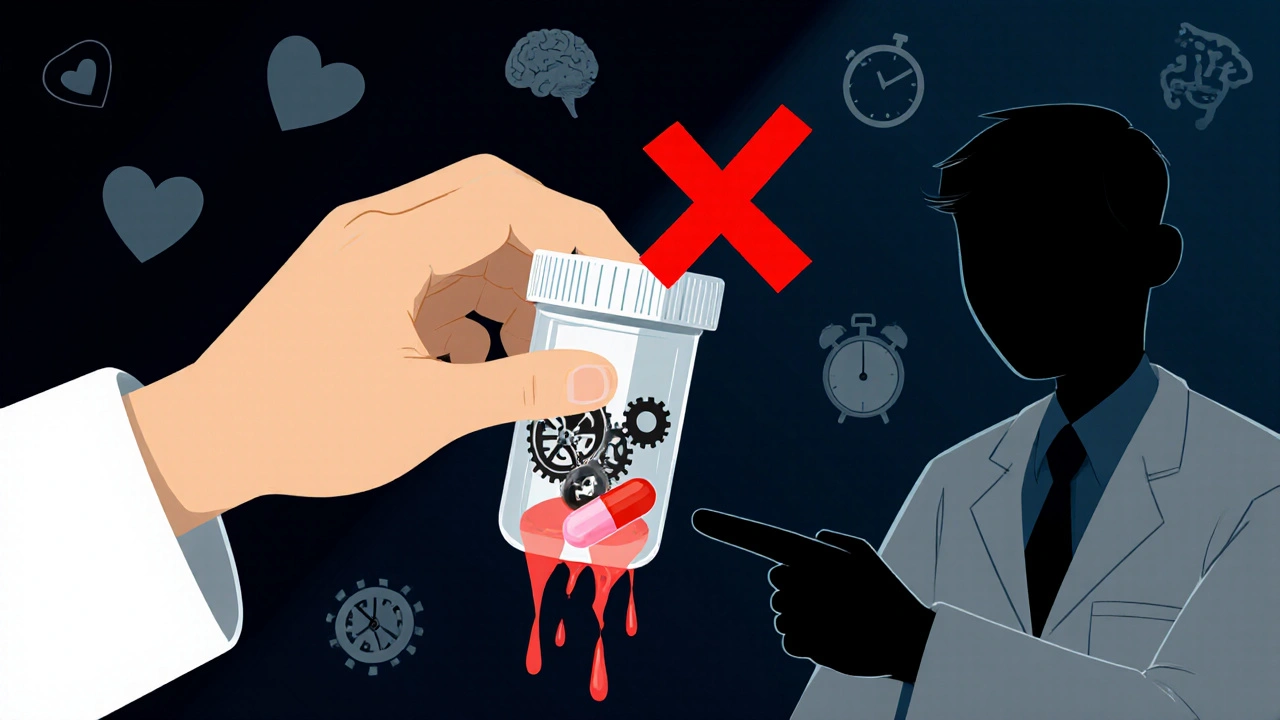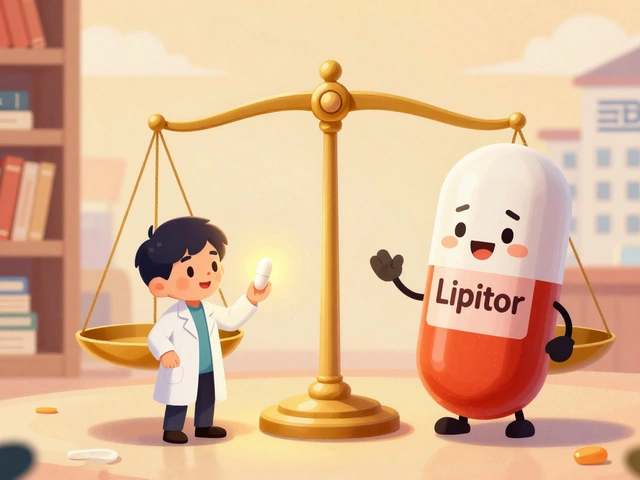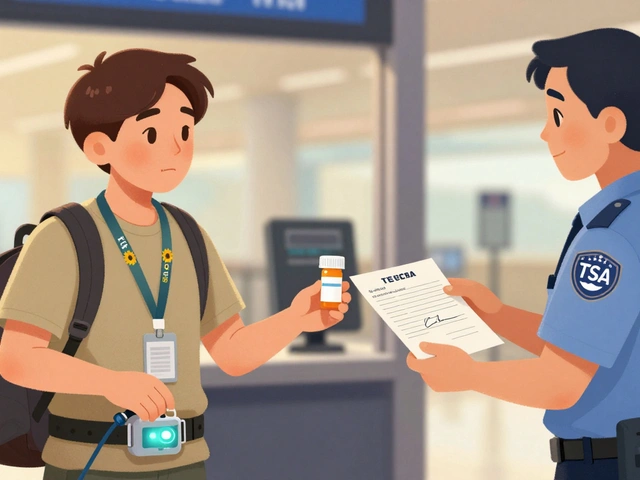
Imagine taking a pill for your depression, and within an hour, you feel like a new person-energized, focused, calm. But by 3 p.m., you’re crashing hard: jittery, tired, irritable. Now imagine another pill that takes a few hours to kick in, but keeps you steady all day. No crashes. No midday panic. That’s the difference between extended-release and immediate-release medications-and it’s not just about convenience. It’s about safety.
How These Two Types Work
Immediate-release (IR) pills are the old standard. You swallow them, and the drug dissolves fast-usually within 15 to 30 minutes. Peak levels hit your bloodstream in under two hours. That’s great if you need quick relief: a headache, a panic attack, sudden pain. But it also means the drug spikes high and drops fast. That rollercoaster can cause side effects: nausea, dizziness, insomnia, or worse. Extended-release (ER), also called XR, SR, CR, or DR, works differently. Instead of dumping everything at once, it slowly leaks the medicine over 12 to 24 hours. Think of it like a water hose with a flow restrictor instead of a full blast. These pills use fancy tech: gel matrices that swell and release drug gradually, osmotic pumps that push medicine out like a tiny internal syringe, or layered tablets that dissolve one section at a time. Drugs like Adderall XR, Metformin ER, and Venlafaxine XR rely on these systems.Why Timing Changes Everything
The biggest difference isn’t how long the drug lasts-it’s how steady the levels stay. IR medications can cause peak-to-trough ratios of 3:1. That means your blood concentration might jump from 100 ng/mL to 300 ng/mL, then drop back down. ER formulations cut that ratio in half, often to 1.5:1. That small change makes a huge difference in how your body handles the drug. Take bupropion, an antidepressant and smoking cessation aid. The IR version hits 600 ng/mL within two hours-well above the 350 ng/mL seizure risk threshold. That’s why you can’t take more than 150 mg of IR bupropion at once. The ER version? It holds steady between 100-200 ng/mL for 24 hours. Same total dose. Same effect. Way safer. For ADHD, Adderall IR lasts 4-6 hours. That means a child might need a midday dose at school. Adderall XR lasts 10-12 hours. One pill in the morning covers the whole day. No more teachers handing out pills. No more stigma. No more missed doses.The Hidden Risks of ER Medications
ER isn’t better in every way. It’s better for chronic conditions. Not for emergencies. If you’re in pain and take an ER opioid like OxyContin, you might wait 2-4 hours before relief kicks in. In acute pain, that’s dangerous. IR oxycodone works in 20 minutes. That’s why ER opioids aren’t used for sudden injuries or post-op pain. The real danger? People don’t realize ER pills don’t work fast. A 2022 GoodRx survey found 41% of patients took extra doses because they didn’t feel anything after an hour. That’s how overdoses happen. One patient took three ER metoprolol tablets because they didn’t feel their heart rate drop-ended up in the ER with dangerously low blood pressure. And crushing or splitting? Never do it. 92% of ER formulations are designed to be swallowed whole. Break open a Concerta tablet, and you release the entire 36 mg dose at once. That’s not a boost-it’s a toxic shock. The FDA issued warnings about this in 2020. Still, pharmacists report 23% of ER errors involve splitting tablets. Many aren’t even scored. Venlafaxine XR? No score line. Don’t even think about it.
When to Choose One Over the Other
Use immediate-release when:- You need fast relief (pain, anxiety, migraines)
- You’re starting a new drug and need to titrate the dose
- You’re in a crisis (psychiatric emergency, acute asthma attack)
- You have unpredictable symptoms that come and go
- You’re managing a chronic condition (hypertension, depression, diabetes, ADHD)
- You struggle to remember multiple daily doses
- You want fewer side effects from peaks and crashes
- You’re on long-term therapy and value consistency
What You Might Not Know About Absorption
ER pills don’t work the same for everyone. If you have gastroparesis-delayed stomach emptying-the drug can sit too long and release too fast. The FDA warned in July 2023 that ER meds can cause 30-50% higher peak levels in these patients, increasing overdose risk. Some ER pills need a certain stomach pH to work. Mesalamine DR, used for ulcerative colitis, only activates in the small intestine, where pH is above 7. If you take antacids or have acid reflux, it might not work right. And steady state? It takes longer. IR meds reach stable levels in 3-5 days. ER meds? 7-10 days. Don’t panic if you don’t feel better after two days. Give it time. Jumping to a higher dose too soon can be deadly.Cost, Access, and Trends
ER versions cost 15-25% more than IR. Adderall XR runs $350-$450 for 30 capsules. IR? $280-$380. But that extra cost often pays off. Fewer doctor visits. Fewer ER trips. Fewer missed workdays. The market is shifting fast. In 2023, 68% of new antidepressant prescriptions were ER. The global ER drug market hit $127 billion in 2022 and is growing at nearly 9% a year. Why? Aging populations. Chronic diseases. And the fact that people stick with their meds longer when they don’t have to remember three pills a day. New tech is coming. Some ER pills now have abuse-deterrent coatings-crush them, and they turn to gel. MIT is testing 3D-printed pills that release different drugs at exact times. But for now, the basics still matter most: swallow whole. Don’t rush. Know the timing.
What Patients Are Saying
On Reddit’s ADHD community, users split between ER and IR. One wrote: “XR keeps me steady all day. No 2 p.m. crash. But I keep a 5mg IR tab for presentations-I need that instant focus.” On Drugs.com, metoprolol ER users reported 32% fewer dizziness episodes than IR users. But 27% said it was too slow during panic attacks. The pattern is clear: ER wins for daily stability. IR wins for control when you need it right now.Bottom Line: Timing Is a Safety Tool
Extended-release and immediate-release aren’t just different forms of the same drug. They’re different tools for different jobs. ER gives you control over time. IR gives you control over speed. Never assume they’re interchangeable. Never crush, split, or chew an ER pill unless your pharmacist says it’s safe. Never take an extra dose because you didn’t feel it right away. And if you’re switching from IR to ER-or vice versa-talk to your doctor. The timing matters more than you think.Can I split an extended-release pill if it’s too big?
No-unless the pill is specifically scored and labeled as safe to split. Most extended-release pills, like Venlafaxine XR or Concerta, are not scored and should never be split. Crushing or splitting can release the entire dose at once, leading to overdose. Even if it looks like it can be broken, the coating or matrix inside is designed to work only when swallowed whole.
Why does my ER medication take so long to work?
Extended-release pills are built to release medicine slowly, so it takes 2-4 hours to reach therapeutic levels-compared to 30-90 minutes for immediate-release. That’s by design. If you feel nothing after an hour, don’t take another dose. You could overdose. Give it time. Steady levels take 7-10 days to build up in your system.
Is extended-release always better than immediate-release?
No. ER is better for long-term, stable conditions like high blood pressure or depression. But IR is better for sudden symptoms-like acute pain, panic attacks, or when you’re adjusting your dose. ER can’t be used in emergencies because it’s too slow. The best choice depends on your condition and what you need the drug to do.
What happens if I accidentally crush an ER pill?
You may release the full dose all at once, which can be life-threatening. For example, crushing an extended-release opioid like OxyContin can cause a fatal overdose. Even with antidepressants like bupropion, crushing can push blood levels above seizure thresholds. If you accidentally crush or chew one, call poison control or go to the ER immediately. Don’t wait for symptoms.
Can I switch from IR to ER without talking to my doctor?
Never. Switching between IR and ER isn’t as simple as swapping pills. The dosing isn’t always equal. For example, 20 mg of Adderall IR is not the same as 20 mg of Adderall XR in terms of how it’s absorbed. Your doctor must adjust the dose and timing. Self-switching can cause underdosing, overdosing, or dangerous side effects.
Do ER medications work the same for everyone?
No. People with slow stomach emptying (gastroparesis), severe acid reflux, or digestive disorders may absorb ER meds differently. The FDA warns that these conditions can cause 30-50% higher peak levels, increasing overdose risk. If you have digestive issues, tell your doctor before starting any ER medication. You might need IR instead.
What to Do Next
If you’re on an extended-release medication:- Check the label for warnings like “Do not crush, chew, or split.”
- Take it at the same time every day-timing affects how steady your levels stay.
- Wait at least 4 hours before taking another dose, even if you don’t feel it working.
- Keep a log: note when you take it, when you feel effects, and any side effects.
- Never refill a prescription without confirming it’s the same formulation (ER vs IR).
- Expect a delay in full effect-up to 10 days.
- Keep your IR dose on hand for emergencies, if your doctor approves.
- Don’t double up if you miss a dose. Take it as soon as you remember, then go back to your schedule.







Riohlo (Or Rio) Marie
November 18, 2025 AT 06:57Oh honey, let me tell you about the time I took IR bupropion because I was ‘too impatient’ for the XR version. Three hours later, I was vibrating like a faulty iPhone charger, convinced the CIA was broadcasting subliminal messages through my ceiling fan. The ER version? Calm. Steady. Like a monk who’s mastered the art of not screaming at traffic. Seriously, if you’re still on IR for anything chronic, you’re not managing your meds-you’re playing Russian roulette with your neurochemistry.
Conor McNamara
November 18, 2025 AT 08:11i think the gov is using er pills to control our minds… why else would they make them so slow? they dont want us to feel better too fast… i read on a forum that the coating on xr pills has microchips… dont split em… they track you…
steffi walsh
November 20, 2025 AT 03:49Thank you for this!! 🙌 I switched from IR to ER for my anxiety last year and it changed my life-no more 3 p.m. panic spiral where I had to hide in the bathroom. I still keep a tiny IR on hand for panic attacks, but 90% of the time? ER is my MVP. You’re not weak for needing steady- you’re smart. 💪
Leilani O'Neill
November 20, 2025 AT 05:16Of course the Americans are still using immediate-release-because they’re too lazy to plan their lives. In Europe, we’ve known for decades that ER is the only responsible way to medicate. You don’t chew your insulin, you don’t crush your hypertension pills. If you can’t handle one pill a day, maybe you shouldn’t be on medication at all. This isn’t a buffet-it’s a medical protocol.
Gabe Solack
November 21, 2025 AT 04:59As a pharmacist, I’ve seen this too many times. Someone comes in with a crushed Concerta tablet and says, ‘I just needed to feel it faster.’ I had to call poison control on a 19-year-old who thought ER meant ‘extra relaxed.’ 😅 The science is solid-don’t mess with the tech. And yes, the 3D-printed timed-release pills coming out of MIT? Wild. But for now, just swallow it whole. Your future self will thank you.
Bailey Sheppard
November 23, 2025 AT 03:11My dad’s on metoprolol ER and he swears by it. Used to have dizziness every time he stood up. Now he’s out gardening at 7 a.m. like he’s 30 again. But he still keeps the IR version in his drawer for those rare panic moments-just in case. It’s not about one being better-it’s about having the right tool for the job. Respect the timing.
Girish Pai
November 24, 2025 AT 12:12Let me break this down in terms of pharmacokinetics: IR exhibits Cmax within 1.5–2.5 h with high CV, whereas ER achieves Tmax at 4–8 h with significantly lower fluctuation index (FI). The AUC0–∞ is comparable, but the peak-to-trough ratio reduction from 3:1 to 1.5:1 translates to a 40% reduction in adverse event incidence per FDA meta-analysis. In layman’s terms? ER = less chaos. IR = controlled chaos. Choose your battlefield.
Kristi Joy
November 25, 2025 AT 04:35For anyone feeling overwhelmed by this info-you’re not alone. If you’re new to ER meds, give yourself grace. It’s not a failure if it takes 10 days to feel the difference. I’ve walked so many people through this. Write down how you feel each day. Talk to your prescriber. You’re not just taking a pill-you’re rebuilding your rhythm. And that’s brave.
Hal Nicholas
November 27, 2025 AT 00:09They say ER is safer… but what if the ‘slow release’ is just a cover for the pharma giants to keep you dependent? You think they want you to get better? No. They want you to keep buying pills. That’s why they make the ER versions more expensive. And don’t get me started on the FDA-bought and paid for. I know what’s really going on.
Louie Amour
November 27, 2025 AT 04:50You people are so naive. I’ve been on 15 different ER meds. I’ve crushed them. I’ve split them. I’ve chewed them. And guess what? I’m still alive. You think the FDA knows better than someone who’s lived with this for 12 years? No. They’re just scared of innovation. If you’re not willing to experiment, you’re not living-you’re just existing. And honestly? You deserve the crash.